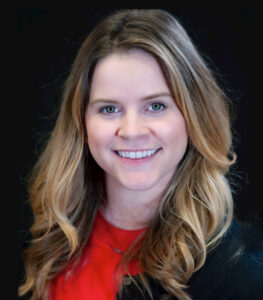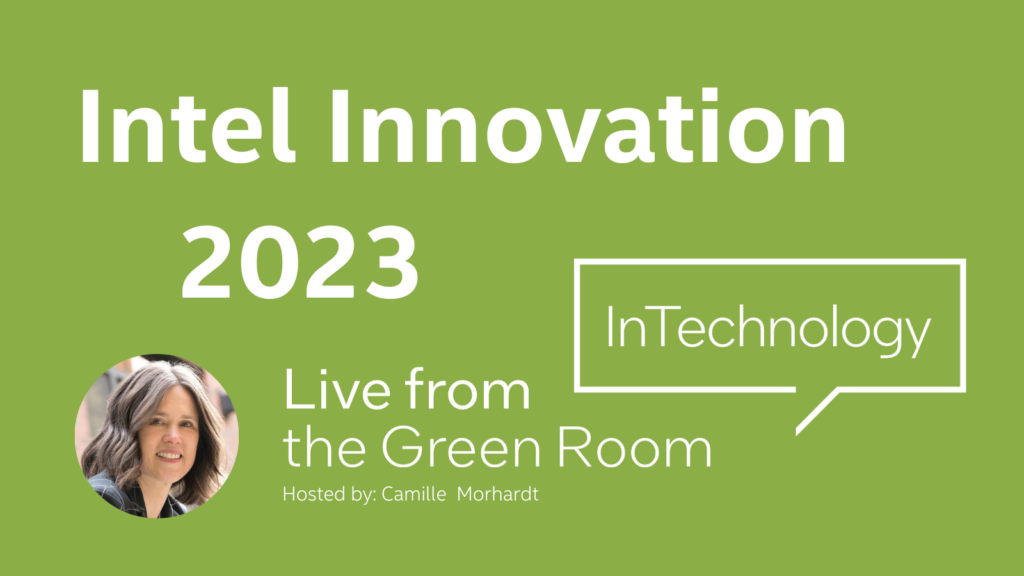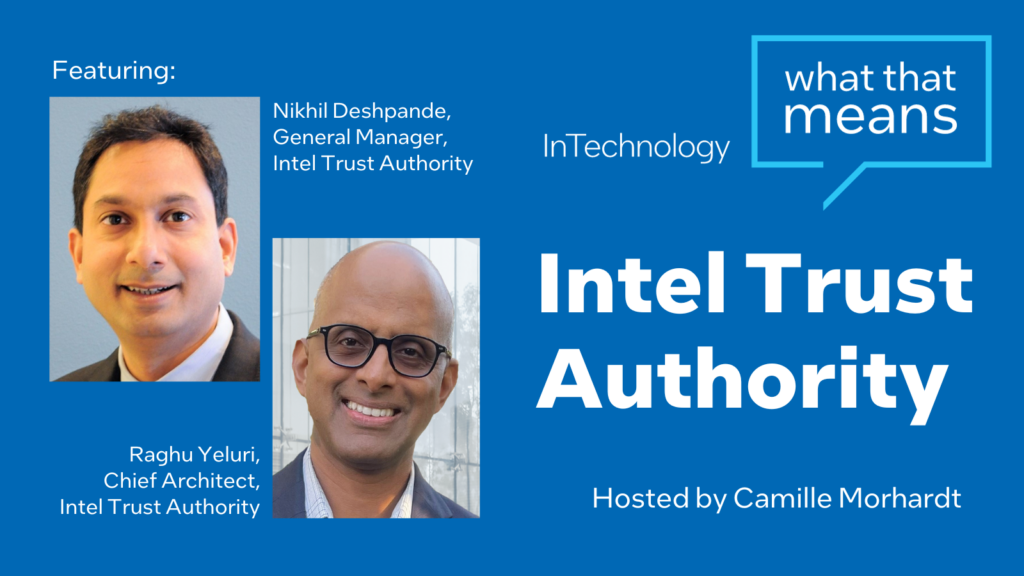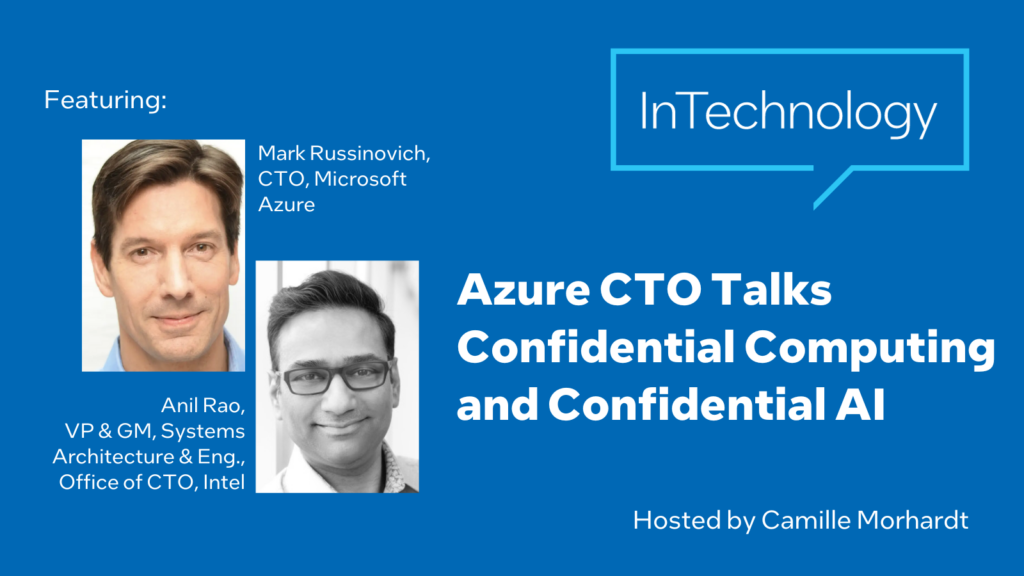[00:00:37] Camille Morhardt: Hi, and welcome to today’s podcast on What That Means: Corporate Responsibility. I have with me today the head of Corporate Responsibility for Intel Corporation, and we’re going to talk about all kinds of things in this space. Welcome Madison West.
[00:00:50] Madison West: Thanks so much for having me, Camille. I really appreciate it. Excited to be here.
[00:00:54] Camille Morhardt: So before we get into any of the specifics of Intel, I would like to take a step back and just understand what is corporate responsibility. I’ll ask you to define that as well as ESG, which has been in the news a lot recently too. So we’ll get into some of those hot topics.
[00:01:11] Madison West: Yeah, absolutely. So ESG stands for Environment, Social, and Governance, and it seeks to reconcile two arguments that on one hand the purpose of a corporation is to maximize shareholder value. I’d call this the traditional financial view. And that on the other hand, the purpose of a corporation is to bring about a greater good for the broader set of stakeholders. Those can be customers, the community, employees, government, the planet, and that’s the corporate social responsibility or corporate responsibility perspective. And so ESG is really about that quantitative material factors that affect, say, future cash flows or the cost of capital for an organization. It’s data and metrics that aren’t adequately disclosed by our financial reporting models and mandated disclosure rules, say with the SEC and the United States.
Corporate Social Responsibility is more the qualitative. So that narrative of social impact efforts that help support, say, brand reputation for instance. And so investors, C-Suite executives, board of directors, are all increasingly being asked about and held responsible to these non-traditional business factors and their impact on corporate performance and shareholder return. And this has really helped drive the evolution from qualitative CSR to quantitative ESG. I would say to take that a bit further, my vision for ESG is one where technology acts as that force multiplier unlocking a full potential of sustainability and responsible business practices. It’s really through innovative solutions that data-driven insights and collaboration where we can address the world’s most pressing social and sustainability problems while simultaneously driving that economic growth as companies that we’re responsible for.
[00:03:17] Camille Morhardt: Who is setting these targets? Is every company setting their own targets? Is it an industry level? Is that all agreed upon or is that not?
[00:03:26] Madison West: It’s a great question. And you’ll hear industry professionals talk about the Wild West or acronym soup. It certainly hasn’t been standardized. It has come a long way. And ultimately, it really comes down to materiality. So in essence, this means focusing on what matters for a company, i.e, what adds value to the company? What poses a risk or an opportunity for its continued success? And as you can imagine, the ESG universe is immense. And so not all ESG factors are equally important for a particular industry or a company. And so these salient or most important ESG issues are ones in which management can control or can manage overall. And then there’s also these upstream and downstream impacts that are outside of management’s control, supply chain components, product use by customers, and those also are key ESG risks and opportunities for companies overall.
[00:04:35] Camille Morhardt: So when you say risk and opportunity or success, you’re measuring that on financial risk or success, correct?
[00:04:42] Madison West: Correct. Yes.
[00:04:43] Camille Morhardt: When you say they’re may be environmental or social, but they’re being measured against a financial impact.
[00:04:49] Madison West: Yeah, and the long-term resiliency of the financial performance of a company.
[00:04:56] Camille Morhardt: Can you talk about how in the land of CR and ESG, how tech companies might be dealing with this differently than other kinds of companies?
[00:05:06] Madison West: Technology really can be this transformative force to help address complex sustainability and social issues. So technology and AI can enable access to education and unique tutoring needs, this proactive healthcare component, economic opportunities just opening up all of these new areas for people to earn a living wage. And then also, AI can help with measuring and mitigation of environmental impact with greater precision, being able to have collaborative platforms with open source initiatives, crowdsourcing solutions. And so this technology enabled ESG really offers the potential to unlock innovation across the world to address these pressing challenges of our time.
[00:06:07] Camille Morhardt: There’s also a scary element in AI. Is there not?
[00:06:11] Madison West: There is.
[00:06:12] Camille Morhardt: There’s some nervousness as well. So how’s that aspect being handled?
[00:06:17] Madison West: Yeah, and that’s where the universe of ESG really comes into play because that governance piece is so important and being able to develop and frame AI around responsible and ethical AI with human-centered governance and oversight is going to be instrumental in being able to capitalize on the positive value while ensuring safeguards for the people actually utilizing this tech.
[00:06:50] Camille Morhardt: I do want to acknowledge that there’s been quite a bit in the news over the last year or so about ESG and there’s been some controversy around it. And I wonder if you could just explain what the controversy is and why it exists?
[00:07:04] Madison West: Yes. It’s the anti-ESG movement or the anti-woke capitalism movement, and it’s really gained a vocal following in the United States. They believe that ESG is being viewed as a matter of ideology rather than economics. So we’ve seen several states propose or adopt legislation around this. Proponents want to stop companies from following environmentally or socially conscious investing principles and really politicizing and polarizing these efforts.
ESG isn’t actually a new business concept, and so it’s not part of this new movement. It’s been around for 30 years and the idea that successful companies can tie financial measures with operational measures. And so looking to drive that transparency, this anti ESG movement is really specific in the US, iIn a lot of other geographies like the EU,. ESG is taking a firmer hold in terms of legislation and regulation. From my perspective, the emergence of anti-ESG movement may seem counterintuitive to the progress made, but I actually believe that this movement and these voices can contribute to the growth and maturity of ESG because actually both sides are sharing this mission of delivering results on behalf of our stakeholders, including our shareholders. And so I think it can only make us better.
[00:08:38] Camille Morhardt: Okay. This is interesting. So if a company is interested in setting up corporate social responsibility corporate responsibility or ESG, how would you go about setting up or structuring that?
[00:08:54] Madison West: Yeah, I think the first step is really honing in on what are those specific topics that are most material to one’s company. The way you can do this is a comprehensive ESG materiality assessment that it helps identify and prioritize those specific ESG issues. Also, a materiality assessment shouldn’t be done in a vacuum. So you should be including not only internal subject matter experts and stakeholders, but also external ones with your customers, NGOs, investors, and really ensuring to include all of those perspectives to help with that prioritization. That’s sort of the key component in looking at this double materiality approach. That’s the inside out. So what impacts a company has on other stakeholders and then that outside in approach, which is more of what do the larger environment, climate change, et cetera, have on the impact of the longevity of the company.
[00:10:05] Camille Morhardt: Some of these goals in the corporate responsibility space, particularly around climate, are decades out. How do we even know that what we’re striving for is what’s going to be needed in that future? How do companies kind of reconcile this or how are they thinking about it when they’re setting them?
[00:10:21] Madison West: First and foremost, we have to acknowledge that these goals are audacious and we may not achieve them all. But to be honest, if we do achieve all of those decade plus goals, then they probably weren’t challenging enough to start with. And transformation takes risk and big picture thinking. So what are the interim metrics that can help drive a company there? I think it really comes down to six key principles. So the first is vision, so that strategic vision we talked about with the audacious goals and components. And then governance. So what internal structures are in place to actually oversee that and connect both the operational team and the board of directors, executive leadership team, and everyone in between. And then the monitoring. So that’s what I was talking about, is breaking down those long-term goals into shorter term milestones. This allows us to show the progress year over year and then be able to assess any challenges throughout.
The next one is collaboration. So getting the internal buy-in for that shared responsibility, but then also working with industry collaborations to drive sort of industry-wide best practices, knowledge sharing. The things that are actually going to get us to some of these more challenging goals that we may not have all the solutions to get to today. And then this agility. So that monitoring piece ensures that we are able to be agile if we need to change a roadmap due to new learnings or new challenges or shifts in the macro environment. And then ultimately, the way that we gain trust in such long-term goals is through transparency. So reporting on your progress, having that year over year analysis along with a baseline so you can actually understand what the data is showing. And then also owning when we are facing challenges, aren’t meeting our expectations, have fallen off the roadmap. That’s an important part for that accountability.
[00:12:41] Camille Morhardt: What is the drive? Is it that the regulations aren’t strict enough in the view of companies or that companies are saying their customers are demanding more above and beyond that? Or are they just looking at it in parallel and setting their own standards while adhering to kind of regulatory standards?
[00:13:02] Madison West: Yeah, it comes down to competitive advantage and resiliency. So it’s not just about meeting compliance requirements. We need to have that competitive edge in our industry as well. So forward-looking businesses are proactively addressing ESG risks and capitalizing on those emerging opportunities so that they can continue to thrive in a changing business landscape that we are all facing today.
[00:13:30] Camille Morhardt: So Intel has set some specific targets, and the acronym used is RISE. Could you please tell us what that is and is this unique to Intel, this acronym RISE, or is this an industry term?
[00:13:46] Madison West: RISE is an Intel framework. That’s our ESG strategy. It stands for, that we want to create a more responsible, inclusive and sustainable world over the next decade, all enabled by our technology and the expertise and passion of our employees. So it’s how we look at an integrated approach to corporate responsibility in ESG and really driving towards creating that value for the company and our stakeholders through a variety of ways. We launched RISE in 2020, but it’s ESG and corporate responsibility isn’t new to Intel. We’ve been reporting for nearly three decades now. So it’s just the new iteration of where we’re looking to the future.
[00:14:37] Camille Morhardt: Okay. So thank you for defining the acronym for us. Could you maybe just give us one or two of the long-term goals that Intel specifically has for each of those? So we can just walk through it one at a time. So Responsible: what is one or two long-term goals that Intel has set there?
[00:14:53] Madison West: Sure. As a manufacturing organization, employee health, safety and wellness is really important. So we have a 2030 goal to ensure that more than 90% of our employees believe that we have a strong safety culture and that 50% participate in our wellness programs. So in 2022, we achieved 87% of surveyed employees agree with that safety is a value metric. 90% of our employees had access to our vitality program with 38% of them participating. And that vitality program are these wellness programs that we offer at Intel.
[00:15:32] Camille Morhardt: Okay. So let’s move on to the inclusive, the I in RISE. What are a couple of the long-term goals in that?
[00:15:38] Madison West: One of our inclusive goals is around supplier diversity. We had a goal for 2030 to increase global annual spending with diverse suppliers by 100% to 2 billion in annual spending. We were thrilled in 2022 to achieve this goal eight years in advance by spending $2.2 billion with diverse suppliers. Then on workforce inclusion, we’re looking to double the number of women and underrepresented minorities in our senior leadership roles. In 2022, our women senior leadership, which is our principal engineer, director and above type positions, increased by 0.3% to 18.9%, and we’re looking to achieve 25% ultimately.
[00:16:33] Camille Morhardt: On the sustainable lens, what are a couple of the longer term goals there?
[00:16:37] Madison West: Sure. So in 2022, we set our Net-Zero global operations commitment. So to achieve net-zero Scope 1 and Scope 2 greenhouse gas emissions by 2040. And so that extends several of our 2030 goals. Those 2030 goals now help us on that roadmap to 2040. We have one [2030] goal of achieving 100% of renewable electricity. And in 2022, we achieved 93% renewable electricity globally. And then we also had as part of our Scope 1 and 2 greenhouse gas emissions towards that net-zero, we decreased 4% from our 2019 baseline. And in many places you don’t want to decrease, but in greenhouse gas emissions, that’s the right direction. So it was good news.
[00:17:28] Camille Morhardt: And the last one is Enabling. How is Intel defining that target?
[00:17:34] Madison West: Enabling is really around the employees and how they empower and propel us forward. So we have a goal to deliver 10 million volunteer hours. And in 2022, our employees and retirees donated just over a million hours of service in our local communities. This was a really great achievement after years of the pandemic where volunteerism was at an all time low just based on safety and health. And so it was really exciting to achieve that million hour milestone.
[00:18:09] Camille Morhardt: So you mentioned Scope 1 and 2. And I should have asked you about this earlier because Scope 1, 2 and 3. Can you explain what those are?
[00:18:18] Madison West: Sure. So Scope 1 and 2 are within our control, so it’s our operational greenhouse gas emissions. Scope 3 is the upstream and downstream side of greenhouse gas emissions. And so it’s a much harder and more challenging space to really grasp comprehensively. We do have a goal to reduce our Scope 3 greenhouse gas supply chain emissions by 30%. It’s an ongoing learning activity to get there and requires industry and supply chain collaboration and investments ultimately.
[00:18:57] Camille Morhardt: So this might be a reasonable time to ask then. When Intel sets these goals, does Intel have in mind each step of the way in order to achieve those goals? Or are some of them goals more along the lines of Moore’s Law where it’s like, “This is the plan and this is the hope and the goal and the target or even the path that we’ve seen so far, but we have no idea really 20 years later how we could possibly achieve that. That might not even be attainable”?
[00:19:25] Madison West: So I would say yes and no. There are absolutely roadmaps that we continue to enact and follow to track our progress. But yes, there are a lot of learnings that need to happen in that time. What 2050 and 2040 look like for us are a lot of unknowns. And so remaining agile and being willing to alter our roadmap based on what is working and what is not working in a particular timeframe is what will help an us enable forward movement and progress. But yes, there are absolutely some goals that we may not meet. They are audacious in nature. That’s a risk worth taking because of the impact that progress towards those can make even if we don’t fully achieve them.
[00:20:22] Camille Morhardt: So how often does Intel report on these goals?
[00:20:27] Madison West: Sure. So publicly, we report annually. Typically, in May of each year. But sound governance is a key way in how we actually make progress towards these goals. And so we report quarterly to our RISE Management Review Committee. So it is a group of leaders across Intel who are responsible for our RISE strategy. And then we also report at least annually to our executive leadership and our board of directors. We also have an ESG Executive Leadership Steering Committee, and we report to them quarterly, including on our RISE progress and bringing forward those areas where we’re facing challenges to really evaluate how we as Intel rally behind those.
[00:21:18] Camille Morhardt: Is this pretty common for a Fortune 100 company?
[00:21:23] Madison West: Yes, it absolutely is. That governance is a key factor within ESG.
[00:21:28] Camille Morhardt: Madison West, head of ESG, officially corporate responsibility at Intel, thank you very much for taking the time to define these terms and talk through some of the hot topics and arguments that exist within them today, as well as diving a little bit into some of Intel’s specific reporting and targets. And of course, if anybody’s interested in the entire report, they can find that in the link below or at Intel.com.
[00:21:55] Madison West: Thanks so much, Camille.




